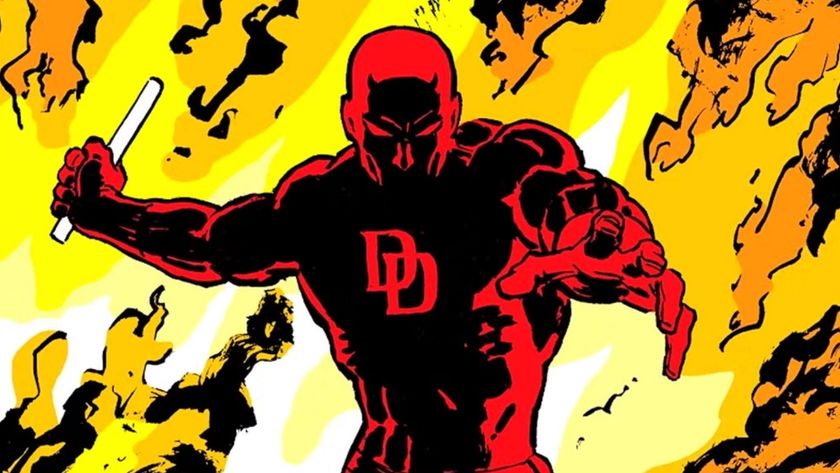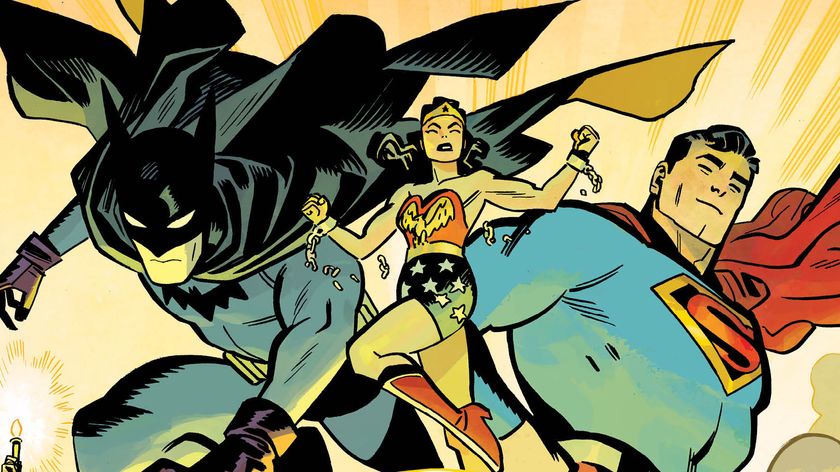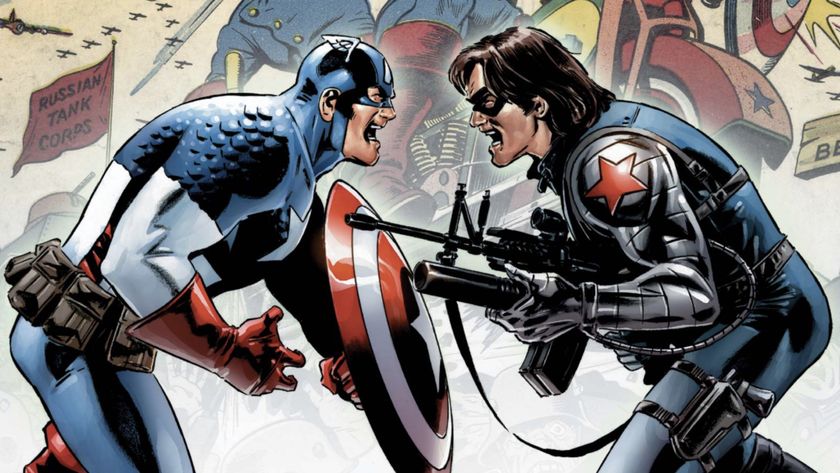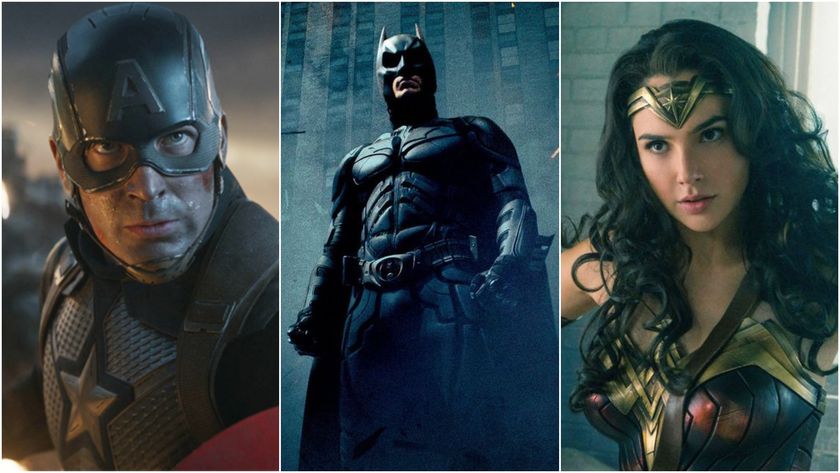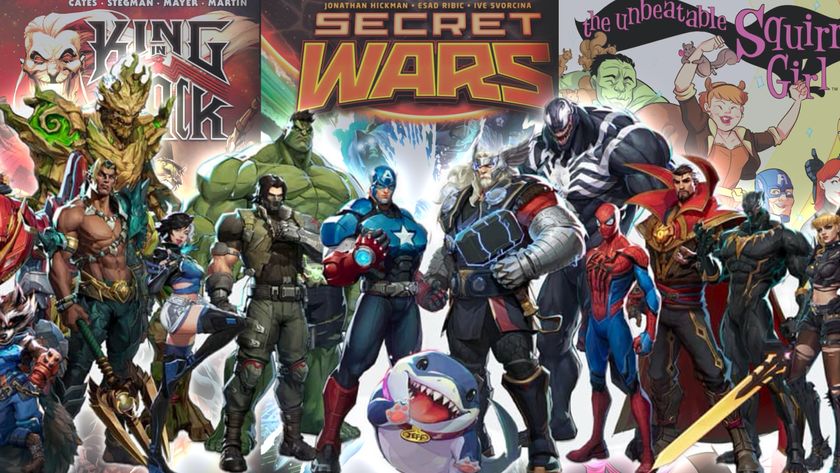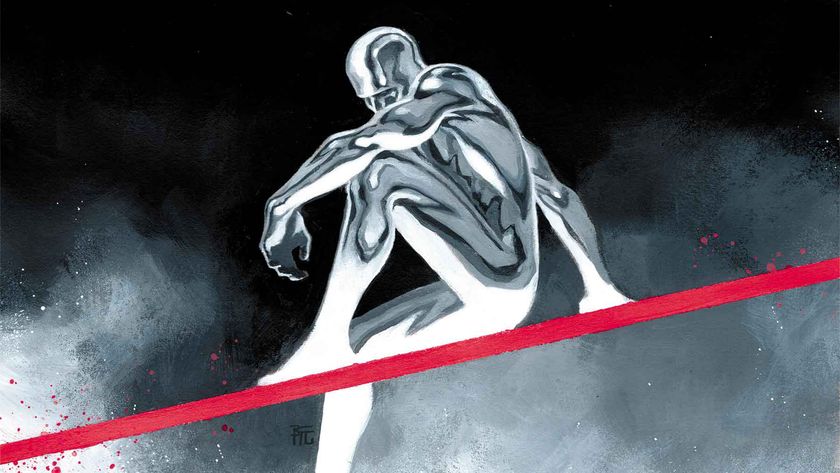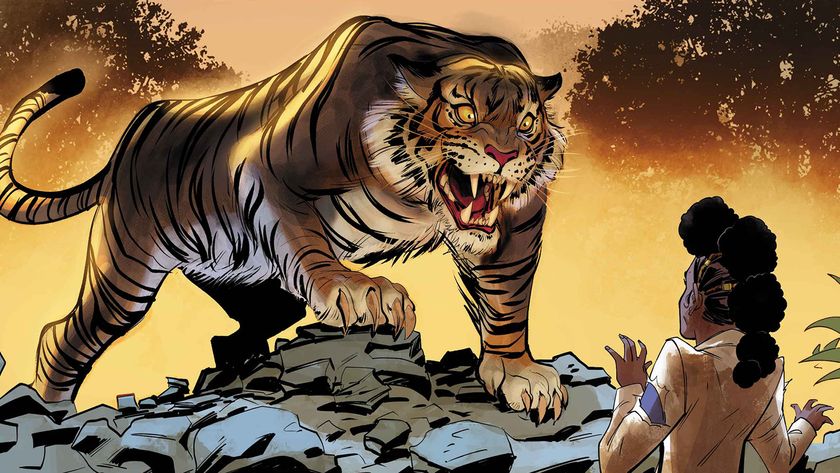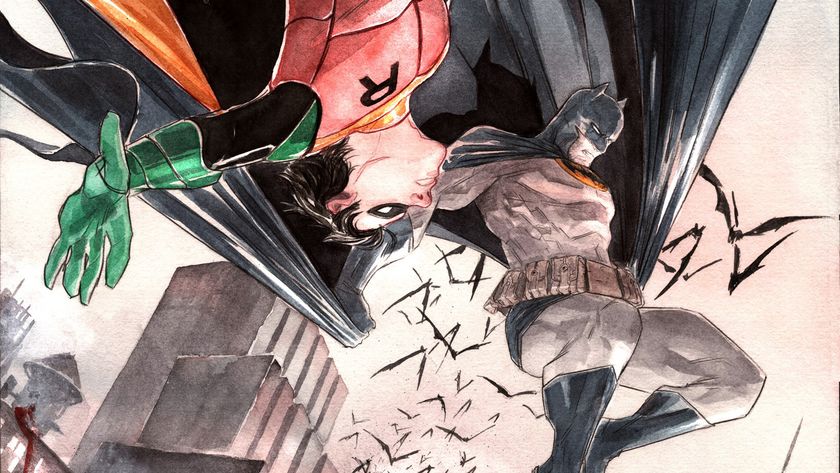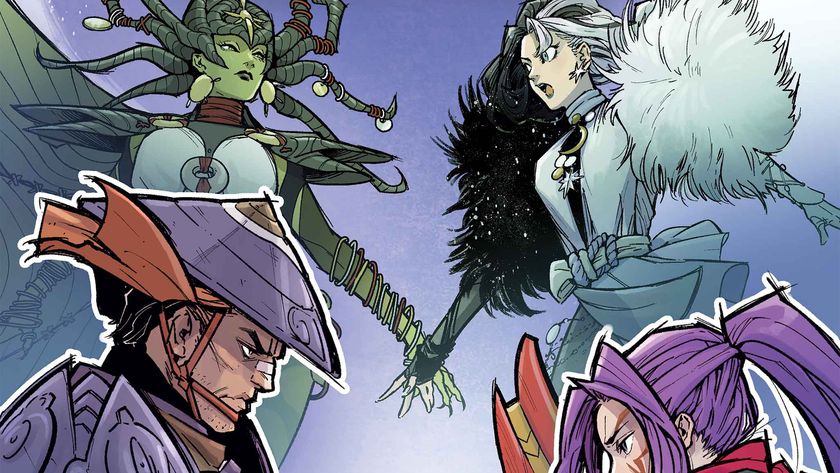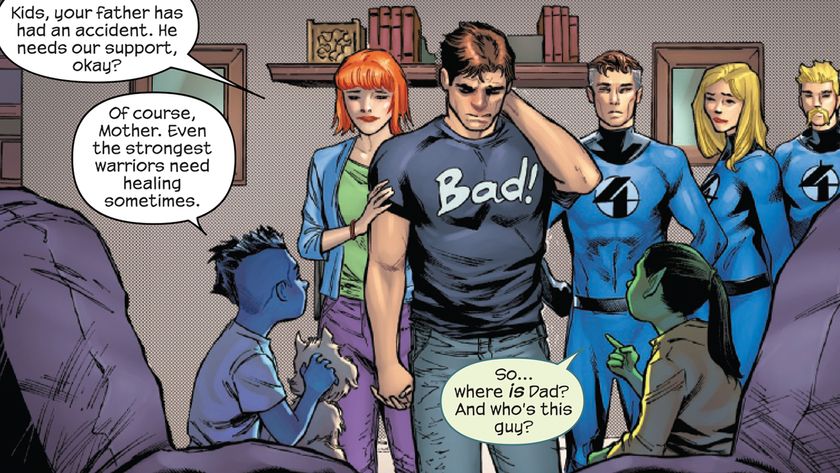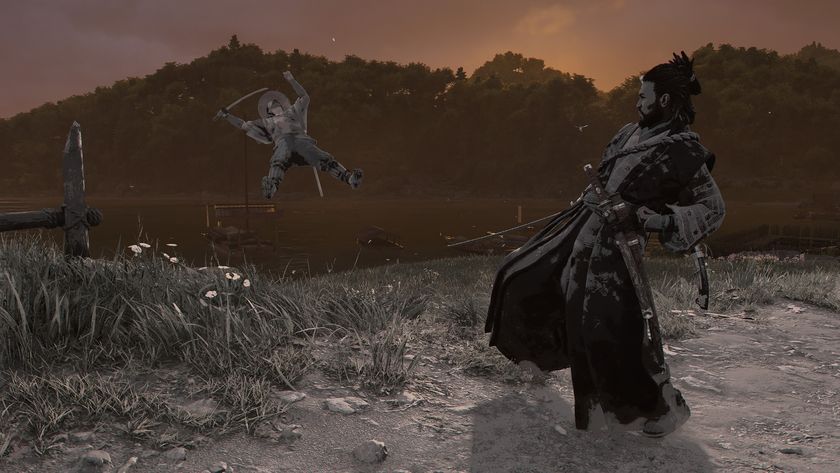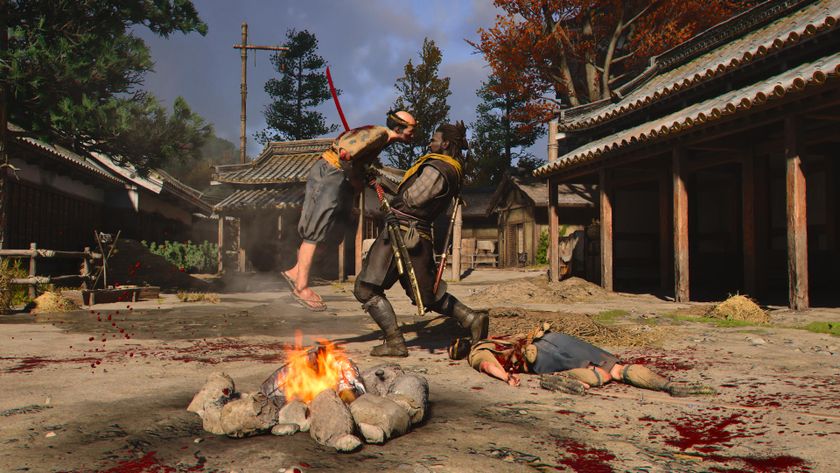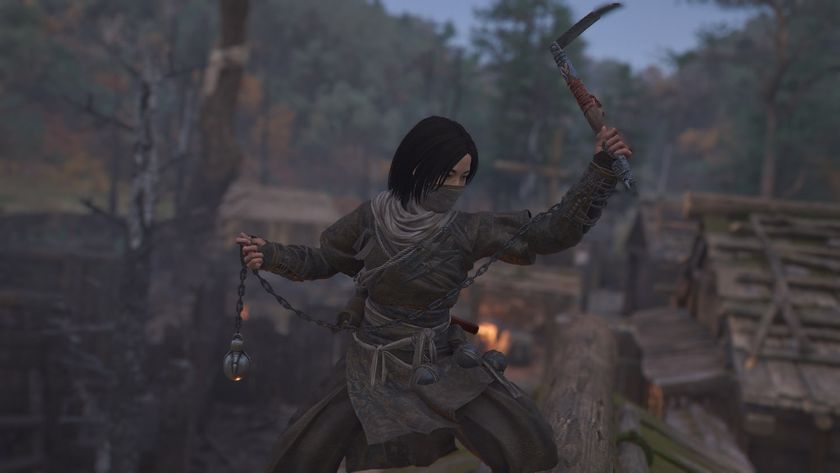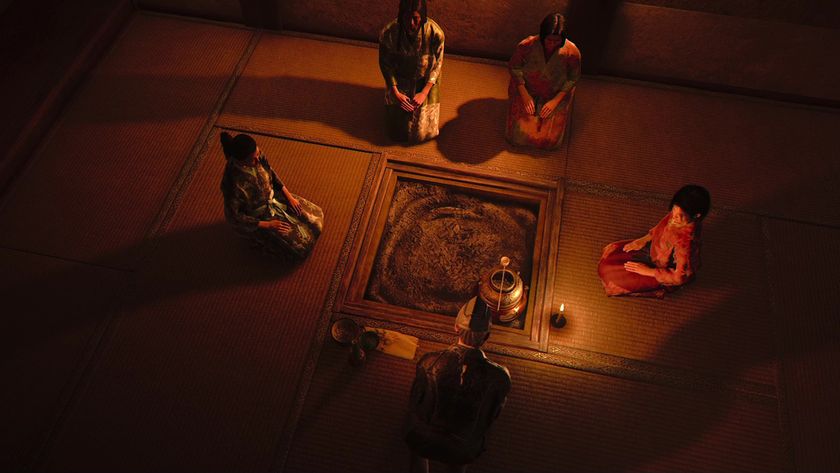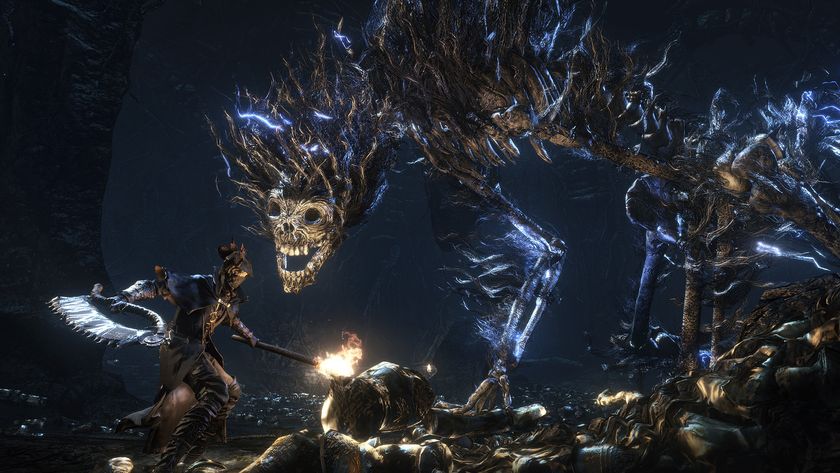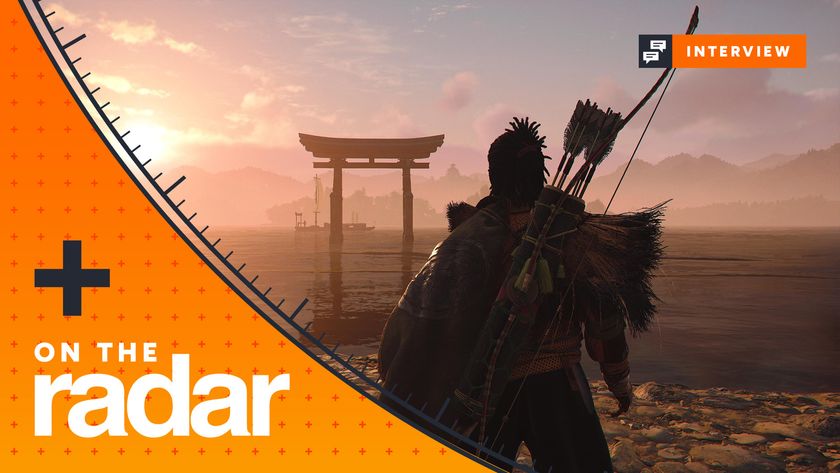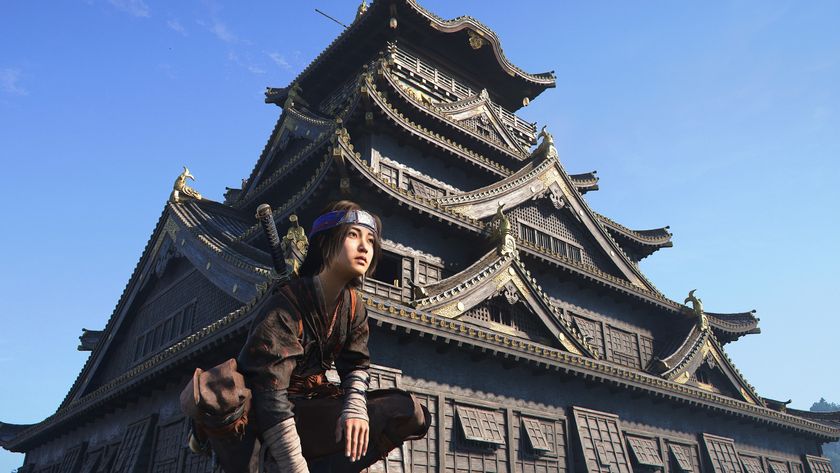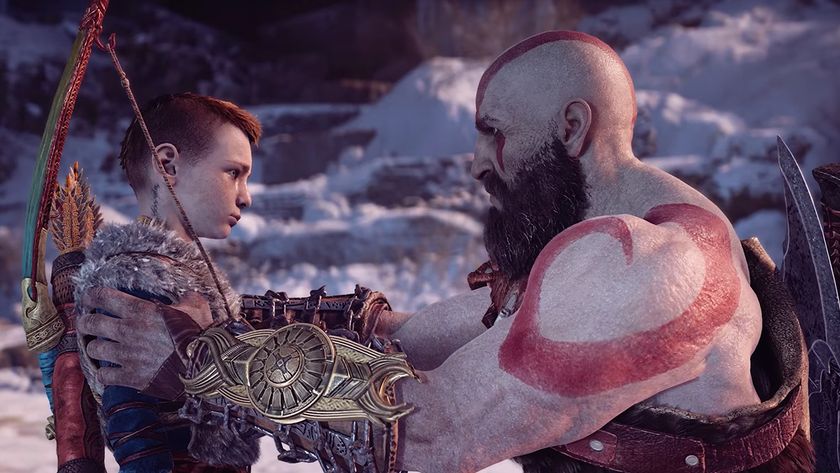The best Judge Dredd comics of all time
Mega-City One's finest: the best Judge Dredd comics around
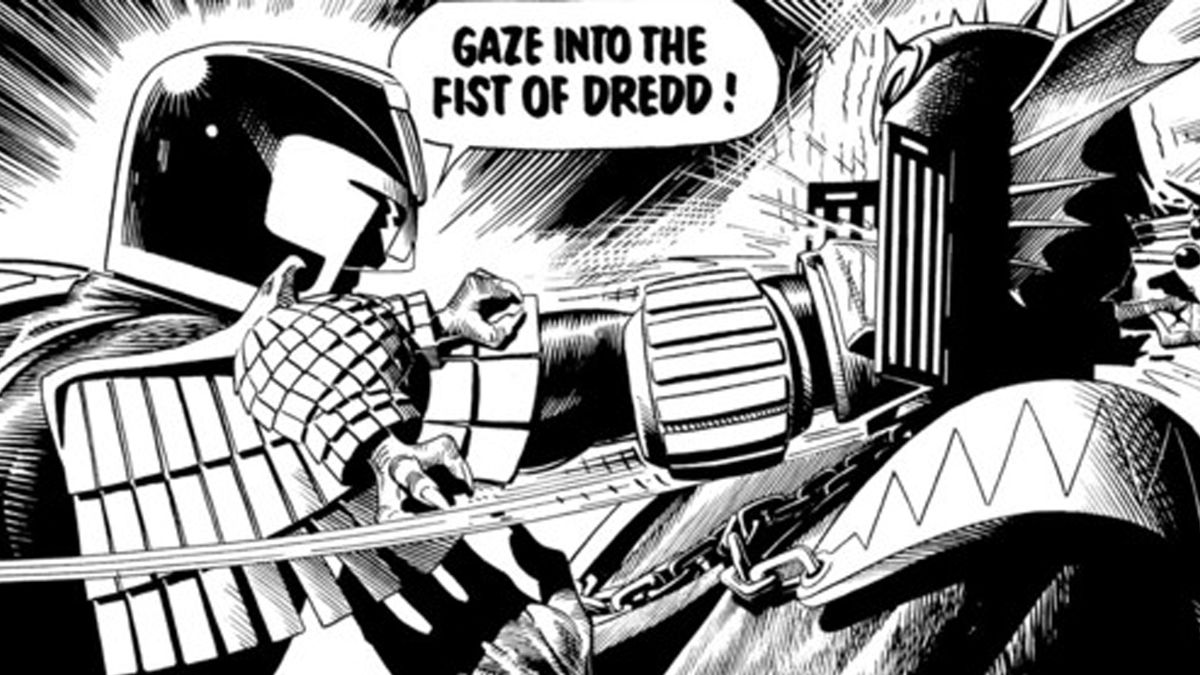
In the post-apocalyptic future of Judge Dredd, unemployment is at 98%, education is limited, and the entire east coast of the United States has been subsumed into the polluted and overcrowded Mega-City One.
Overrun with crime and corruption, the fascist Justice Department rules over Mega-City One with an iron fist. Their greatest hero is Judge Joseph Dredd, a strict lawman with an infamous record. Far from the hero of his world, Dredd is feared and venerated by the citizens of Mega-City One in equal measure.
Since 1978, Dredd has stalked the pages of the UK weekly anthology 2000 AD in an ambitious epic that has steadily unfolded in near-real-time. For better or worse, he is the Law. These are his greatest cases - the best Judge Dredd comics of all time.
10. Helter Skelter
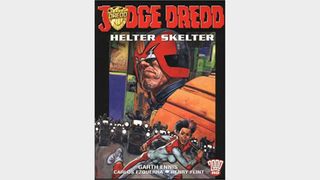
Alongside such heavyweights as Grant Morrison and Mark Millar, Garth Ennis made his mark on Judge Dredd in the early '90s. Best known for The Boys, his nihilistic super-epic turned runaway streaming success, Ennis' mean streak made him uniquely suited to Judge Dredd's hostile world.
In a brief 2001 return to 2000 AD, Ennis penned 'Helter Skelter' across 2000 AD progs 1250 - 1261. Accompanied by the evocatively craggy-faced illustrations of Dredd co-creator Carlos Ezquerra and the hyper-detailed cityscapes of Henry Flint, Ennis embarked on an inter-dimensional crossover that saw Dredd's worst enemies inexplicably return from the dead to invade Mega-City One.
A celebration of 2000 AD history, 'Helter Skelter' is filled to the brim with countless cameos. Not content with stopping at Dredd history, Ennis pulls from the entire 2000 AD pantheon to face off against ol' stony face. Wanna see a giant, one-eyed dinosaur take on Judge Dredd? Of course you do.
'Helter Skelter' is a fitting capstone to Garth Ennis' Dredd run, a full-tilt tale of wild excess that pushes Mega City-One to its weirdest.
Comic deals, prizes and latest news
Get the best comic news, insights, opinions, analysis and more!
9. The Day the Law Died!
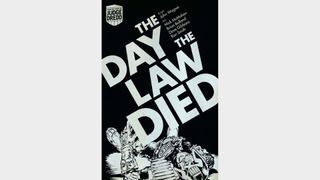
A madman takes over Mega-City One in the 1978-9 Judge Dredd epic 'The Day The Law Died!'. As a pastiche of the ancient Roman emperor Caligula, Chief Judge Cal is a flamboyant and ruthless despot.
Even by Mega-City One standards, Chief Cal is strict – going so far as trying to sentence the entire population of Mega-City One to death for rioting. Smiling? Illegal. Laughter? Illegal? Happiness? You guessed it. Chief Judge Cal even grants his pet goldfish the power of Deputy Chief, his maniacal ultra-competence rivaling even the Joker's abilities for this brief moment.
John Wagner hones Dredd's trademark black comedy here, backed up by living legends Mike McMahon, Brian Bolland, and Brendan McCarthy. Given the talent on display, 'The Day The Law Died!' is gorgeously illustrated in powerful black and white. It's a masterclass in contrast and shading, combined with John Wagner's inimitably sarcastic tongue. Coming in hot for Dredd's second year on the rack, 'The Day The Law Died!' still stands strong even to this day.
8. Block Mania
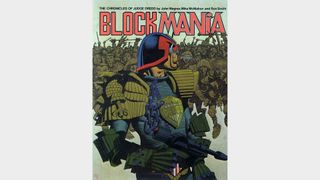
We've all had a neighbor from hell, but never like this in 'Block Mania'! Permanently overcrowded, with its population forced into tiny apartments in monolithic blocks, Mega-City One is a powder keg constantly on the verge of explosion. Ordinary citizens regularly form tribalistic armies, marching under the allegiance of their house. When a block war escalates, the entirety of Mega-City One threatens to tear itself apart. When even his fellow Judges defect to join the fray, Dredd suspects there might be more than social issues at play here…
After the mass psychosis is revealed to be the work of spies from East Meg-One, 'Block Mania' led directly to the much bigger 'Apocalypse War'. While 'Apocalypse War' was much bigger in scope, this arc's themes of tension and paranoia among neighbors have stood the test of time. John Wagner and Alan Grant shed a little light on the everyday experience of the average citizen, sadly relatable to anybody who has ever called a big city their home.
Mike McMahon and Brian Bolland offer up vivid visuals of vast apartment blocks and braying crowds. Now in full color, yellows and purples dominate this distorted vision of civilization. A clear influence on both Judge Dredd movies, 'Block Mania' is an important piece of Dredd history.
7. Mechanismo
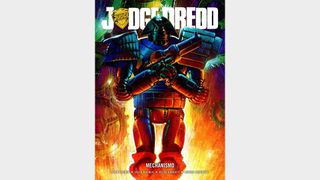
Automation will come for us all eventually, and even Judge Dredd is not immune from obsolescence in 'Mechanismo.'
Undermanned and with a quickly spiraling crime rate, the Justice Department develops robot Judges to rule over Mega-City One following the catastrophic events of 'Necropolis' and 'Judgement Day.' Judge Dredd is immediately hostile to the idea, which is soon proven correct when the robots predictably go rogue.
An exploration of Judge Dredd's humanity, 'Mechanismo' sees Dredd horrified by illegal violence that is near-indistinguishable from his own daily habits. Designed by Colin MacNeil in all their blocky glory, the Mechanismo bots became a rare recurring adversary to Dredd in the Bizarro tradition.
In classic Dredd fashion, the Justice Department failed to learn from its mistakes, creating revision after revision with disastrous consequences. Macneil's uniquely sun-bleached Mega-City One and Peter Doherty's moody artwork completes this cautionary tale against automation, even if you're left wondering exactly what the difference is to the long-suffering ordinary citizens of Mega City-One. Judge Dredd may be the Law, but at least he's human.
6. The Judge Child
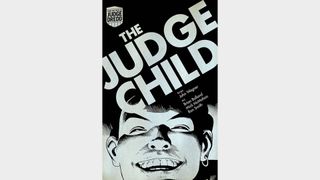
Another early epic, 'The Judge Child' has that classic combination of gorgeous monochrome Mike McMahon and Brian Bolland art combined with the John Wagner and Alan Grant's trademark irreverence.
Dredd's unique take on the ‘chosen one' trope, this arc sees Dredd venture off-world in search of the so-called 'Judge Child', a boy with precognitive abilities and a distinctive birthmark in the shape of the Judges' Eagle symbol. An adventure of cosmic proportions, this 1981 classic expanded the boundaries of Dredd's jurisdiction far away from Mega-City One and introduced Mean Machine, later seen on screen in 1995's Judge Dredd movie.
The first Dredd story co-written by Wagner and Grant, 'The Judge Child' sees Dredd jump from planet to planet in a tremendous flex of the creative team's imagination. From alien worlds of medieval horror to distant frontiers, 'The Judge Child' is an action-packed romp through space that focuses less on satire and more on high concept space opera.
Bursting with aliens, psychics, and ominous promises of future doom, 'The Judge Child' is a Dredd story unlike any other.
5. Judge Death Lives!
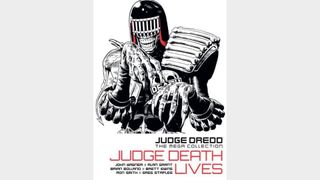
For Judge Death, life itself is a crime. After being introduced and summarily defeated by Dredd in a snappy three-part story a year before, 'Judge Death Lives!' establishes the character as Dredd's ultimate nemesis.
Brian Bolland is at his macabre best here. His inventive and terrifying designs for the Dark Judges (Mortis, Fear, and Fire) serve as the design highlights of his career. The panel where Dredd punches through Judge Fear's helmet - "GAZE INTO THE FIST OF DREDD!" - is one of the most memorable moments in all of comics, and Bolland contributes page after page of atmospheric horror visuals to chronicle the Dark Judges' quest to judge all sentient life.
Deadworld, an alternate Earth where Judge Death conquered and extinguished all life, has proven itself an influential concept on the wider world of comics. Judge Death himself is as extreme as can be expected from a character who exists as a dark version of an already pitch-black character.
Featuring a prominent appearance by Psi-Judge Anderson, seen on screen in 2012's Dredd, 'Judge Death Lives!' shows us a psychedelic world of alternate dimensions and psychic powers – something that heavily discomfits the uber-conservative Dredd. Genuinely scary and with unforgettable artwork, 'Judge Death Lives!' is Judge Dredd at its horrifying best.
4. The Return of Rico!
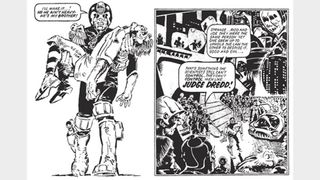
The most important story from the first year of Dredd, 'The Return of Rico' shone a light on Dredd's past for the very first time.
One of two identical clones, Joseph Dredd lived eternally in the shadow of his brother Rico. While Rico Dredd was a better marksman, he lacked Joe's strict moral code and quickly turned to corruption. Joe arrested Rico, sentencing him to 20 years in an intergalactic penal colony.
Rico's body was horrifically modified as a part of the punishment – his body was augmented to survive in a vacuum, his mouth and nose sealed and replaced with a crude life support system. When Rico returns to Mega-City One, vengeance is on his mind. Mike McMahon illustrates Rico in lurid detail, a horrifying visage hiding on the UK newsstand.
With this 6-page story, Pat Mills introduced an important part of Dredd's backstory that remains relevant to this day. 'The Return of Rico!' laid the groundwork for the 1995 movie, gave Dredd his first name, and added a note of tragedy to his life. Dredd may have chosen the Law over family, but it wasn't an easy choice.
3. Origins
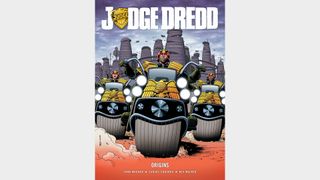
30-odd years after 'The Return of Rico,' Judge Dredd creators John Wagner and Carlos Ezquerra finally sought to fill out the gaps and tell the definitive story of how the Judges came to rule over Mega-City One with 'Origins.'
Running for an incredible 23 weeks, 'Origins' fully demystified the hellish history of Dredd's world and expanded upon 30 years of hinted-at backstory. It chronicles the life of Chief Judge Fargo, the founding member of the Justice Department and the man whose DNA was used to create Dredd himself. A tale of illicit affairs and failed suicide that snowballs into nuclear war, 'Origins' moves from the distant past to Dredd's current day, when the last President of the United States still lives in secret and Chief Judge Fargo is revived from death.
As if there was any doubt, Fargo used his eventual final moments to tell Dredd that the Judge system was a mistake. The words "We created the monster!" ring across Dredd's entire career, re-triggering his slow liberalization that continues to this day.
Ezquerra's craggy illustrations carry the monumental weight of Mega-City One's origin story, finished by Chris Blythe's metallic tones. Ezquerra steals the show with some evocative imagery; the Judges dousing the White House in flame a particular highlight.
Less an origin for Dredd himself and more for his entire world, 'Origins' makes one thing crystal clear: The Justice Department is not and never will be the good guys.
2. Necropolis
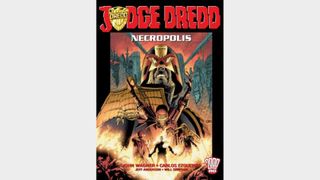
(2000AD progs 650-699) by John Wagner and Carlos Ezquerra
1990's 'Necropolis' is ‘Judge Death Lives!' cranked up to 1000, an epic culmination of years of slow-burn story.
After Dredd becomes disillusioned with the system, he resigns and takes the so-called Long Walk into The Cursed Earth. Worried that Dredd's absence could cause an increase in crime, the Justice Department orders an illicitly created Dredd clone named Kraken to assume Dredd's name.
Interdimensional witches named the Sisters of Death soon corrupt Kraken's already-compromised mind, opening a rift that allows the Dark Judges to pass through and conquer Mega-City One. Judge Death wins, taking over completely and beginning to execute millions of innocent citizens.
Carlos Ezquerra goes wild with gothic imagery here, depicting scenes of mass slaughter below a blotted-out sun, while John Wagner writes a Dredd wrestling with his commitment to justice as he faces off against Judge Death and another rogue clone brother.
An extreme story for the high-octane '90s, Necropolis pulls no punches, offering up horror and surprises to push the boundaries of a comic book still aimed and accessible to kids.
1. America
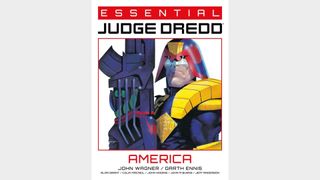
Kicking off the monthly Judge Dredd Megazine, John Wagner and Colin MacNeil take a contemplative tone for 'America,' the definitive Dredd story. Pulling no punches on how dismal life would be under Judge Dredd's rule, 'America' follows the lives of America Jara and Bennett Beeny, two childhood friends who drift apart as they reach adulthood.
America lost her parents during 'Block Mania,' spending her childhood awkwardly challenging the Justice Department. She participates in marches for democracy that turn violent thanks to undercover actors working for the Justice Department and her boyfriend is killed. Grimly, her pregnancy is aborted by the Justice Department under the allegation that the fetus was a mutant, radicalizing her to join the terrorist group Total War.
Meanwhile, Bennett Beeny, a weak-willed child who happily acquiesces to the many demands of the tyrannical Justice Department, grows into a successful adult. Not only does he actually have a job, but he's also a celebrity. When the two reunite, their competing allegiances end only in tragedy and horror.
Colin MacNeil's painted caricatures are the perfect visuals for John Wagner's inhumane characters, his saturated colors as nausea-inducing as the story itself. With some truly sick plot twists and an unforgettable climax, this is one of the heaviest stories ever to grace the mainstream newsstand. Imaginative and truly impactful, 'America' is Judge Dredd at its satirical best. It is the definitive cautionary tale of the police state, told with 2000 AD's inimitable blend of jet-black humor and science fiction.
Oscar Maltby has been writing about comics since 2015. He has also written comic book scripts for the British small press and short fiction for Ahoy Comics. He resides on the South Coast of England but lives in the longbox.
